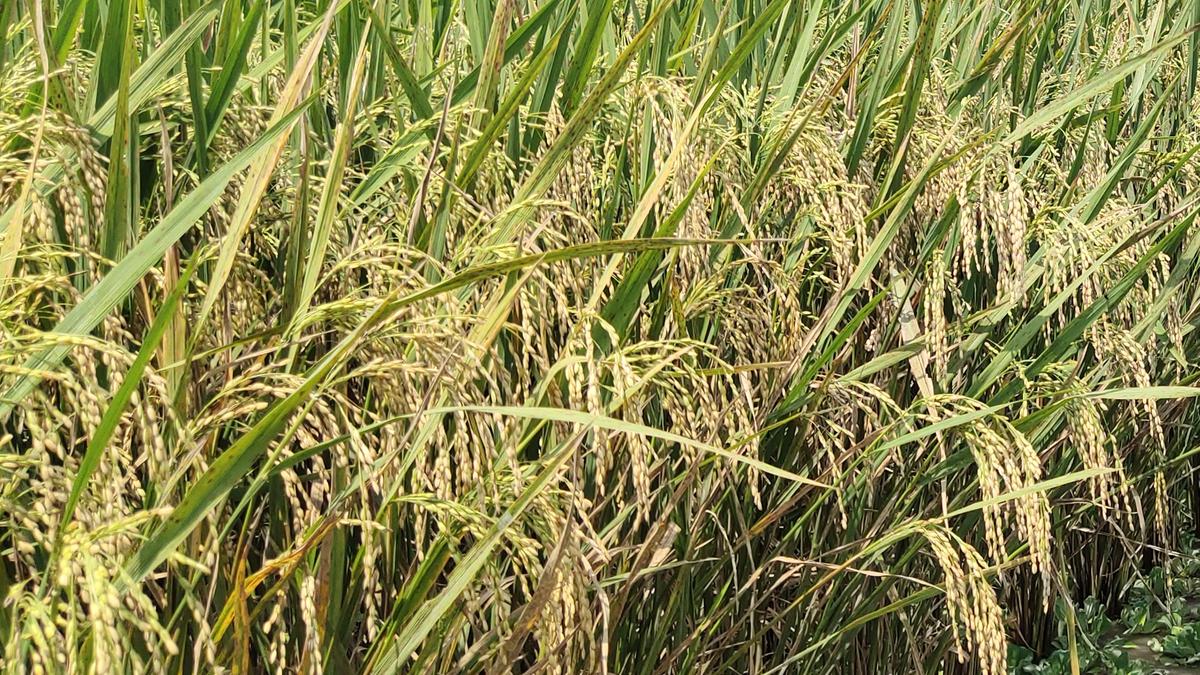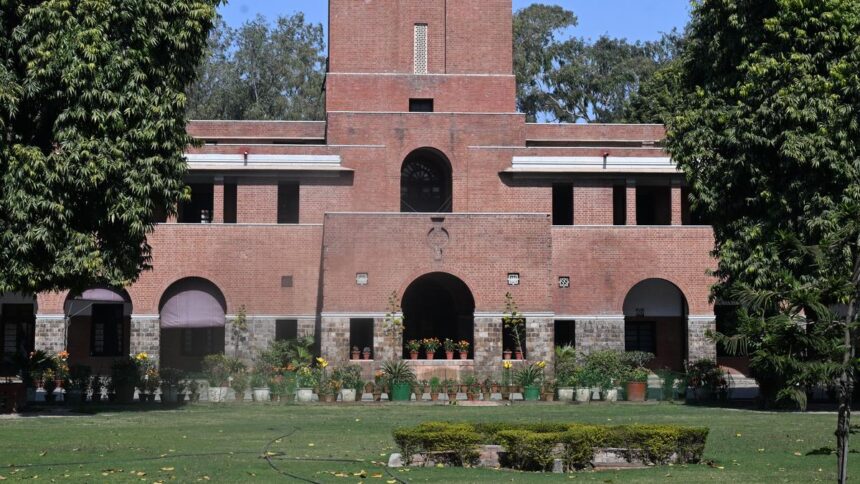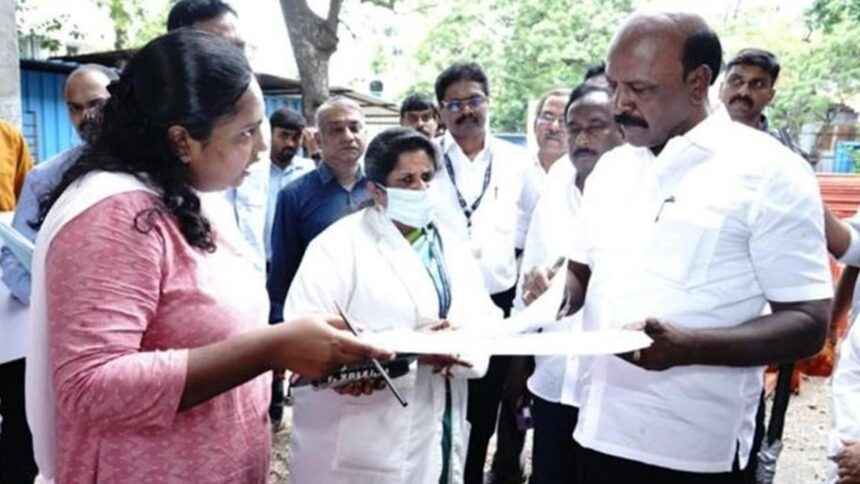
Fully grown ADT 59 paddy variety cultivated at Tamil Nadu Rice Research Institute (TRRI), Aduthurai.
| Photo Credit: Special Arrangement
A newly released short-duration rice variety, ADT 59, is gaining traction among delta farmers for its high yield, salinity resistance, and bold grains — key traits that align with the needs of paddy cultivators in the Cauvery delta.
Developed by the Tamil Nadu Rice Research Institute (TRRI), Aduthurai, the variety is now being promoted as a suitable replacement for the traditional choices such as ADT 37 and ASD 16.
K. Subrahmaniyan, Director of TRRI, told The Hindu that the ADT 59 had demonstrated yield potentials of 15-20% more than conventional varieties. “While typical yields in delta paddy farms are around 2,500 kg per acre, a farmer in Malapalaiyam village in Virudhachalam harvested up to 4,000 kg per acre using ADT 59 under Kuruvai conditions,” he said.
Mr. Subrahmaniyan said only 50% of conventional fertilizer input is required for ADT 59. “This is one of the highest-yielding bold grain varieties developed specifically for Kuruvai. It’s cost-effective, nutritive, non-lodging, and perfectly suited to the delta’s soil profile,” he said. “Officially released last year, it is already being adopted widely by farmers.”
As Direct Procurement Centres (DPCs) typically prefer bold grain varieties, ADT 59 offers an added advantage due to its grain weight, improving returns for farmers.
R. Pushpa, Assistant Professor specialising in grain quality traits at TRRI, highlighted the research journey behind the variety. “ADT 59 followed extensive trials after which it was released in 2024. Not only does it mature in 110-115 days, making it ideal for Kuruvai, Navarai and summer seasons, but it also performs well in saline conditions and under direct sowing system,” she said. “Its yield is higher than its predecessors and it contains 19.4 mg of zinc per 100g, adding nutritional value,” she added.
Ms. Pushpa said the variety’s grain quality — short and bold — is particularly favoured for making idli and dosa. “With a 6:1 rice-to-black gram ratio, it produces soft, firm batter, requiring less grain while giving more output,” she added.
Farmers in the delta, who traditionally relied on older bold-grain varieties like TPS 5 developed outside the region, often face challenges with pest and disease resistance. ADT 59 addresses these concerns while offering resilience to stem borers, blast, and brown leaf spot, the TRRI authorities said.
Published – July 06, 2025 06:14 pm IST





















